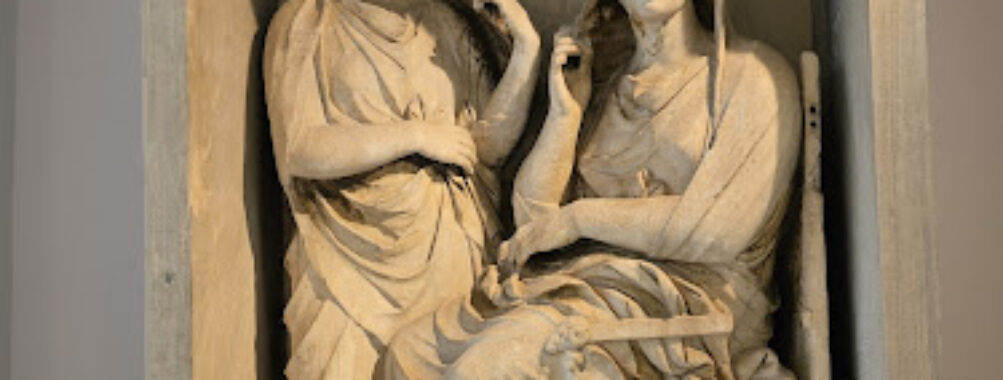
Kerameikos Museum
Table of Contents
Description
The Kerameikos Museum in Athens is one of those places that quietly leaves a lasting impression. It doesn’t shout for attention the way the Acropolis does, but instead whispers stories of life, death, and remembrance from thousands of years ago. Built in the late 1930s and later expanded, the museum sits right by the ancient cemetery of Kerameikos, which was the most important burial ground of classical Athens. What makes it special is the way the museum and the surrounding site blend together—you walk through tombs and stelae outside, then step into the museum to see the artifacts that once belonged to them.
Inside, the collection is heavy on funerary art—gravestones, sculptures, and pottery that once marked the lives of Athenians long gone. Some of the earliest examples of Greek Geometric art are here, dating back to the 9th century BC. That kind of continuity is fascinating: you can literally trace how Athenians expressed grief, honor, and memory over centuries. Personally, I found the carved marble stelae especially moving. They’re simple yet so human—you can almost feel the emotions carved into stone two millennia ago.
The museum isn’t massive, which is actually part of its charm. You won’t feel overwhelmed like you might in larger institutions. Instead, it feels approachable, almost intimate, and that makes it easier to connect with what you’re seeing. Families often find it manageable with kids, and accessibility is thoughtfully considered with wheelchair-friendly entrances and restrooms. Sure, not every visitor walks away awestruck—some expect a grander experience—but for those who appreciate history told in subtle, authentic ways, Kerameikos is a gem.
Key Features
- Collection of funerary sculptures, stelae, and vases spanning from the Geometric period to the Hellenistic era
- Artifacts directly connected to the adjacent Kerameikos cemetery, offering a rare on-site context
- Early Geometric pottery, including pieces dating back to around 860 BC
- Outdoor archaeological site with original graves, tomb enclosures, and remnants of the ancient city walls
- Compact museum building with four exhibition halls and a peaceful courtyard
- Wheelchair accessible entrance and restrooms, making it easier for all visitors to explore
- Family-friendly environment that is manageable for children without being overwhelming
Best Time to Visit
Spring and autumn tend to be the sweet spots for visiting Kerameikos. The weather is mild, the light is golden, and walking around the outdoor cemetery feels pleasant rather than punishing. Summer afternoons in Athens can be brutal, and while the museum itself is indoors, the real magic of the site comes from wandering the grounds outside. If summer is your only option, aim for early morning or late afternoon when the heat isn’t so intense. Winter has its perks too—fewer crowds, quieter spaces—but be ready for shorter daylight hours and the occasional rain shower.
Personally, I love going in the late afternoon, just before closing. There’s something hauntingly beautiful about the shadows stretching across the ancient stones as the day winds down. It feels almost like stepping back in time, when Athenians themselves would have walked here at dusk.
How to Get There
Reaching the Kerameikos Museum is straightforward, especially if you’re already exploring central Athens. The site is located at the end of Ermou Street, one of the city’s main thoroughfares. If you’re staying near Monastiraki or Thissio, you can easily walk there in under 15 minutes. The closest metro stop is also called Kerameikos, which makes navigation pretty painless. From there, it’s a short walk through the Gazi neighborhood, an area that’s lively with cafes and bars if you feel like grabbing a bite after your visit.
For those who prefer buses or taxis, both are easy options, but honestly, walking is half the fun in Athens. You’ll pass by little shops, street art, and glimpses of daily life that add color to your journey. Just wear comfortable shoes—the cobblestones can be unforgiving.
Tips for Visiting
First and foremost, give yourself enough time to see both the museum and the outdoor archaeological site. Many visitors make the mistake of focusing only on the indoor exhibits, but the cemetery grounds are just as important and arguably even more atmospheric. Bring water if you’re visiting in warmer months, because shade is limited once you’re outside.
If you’re traveling with kids, the museum’s smaller size works in your favor. Children usually find the statues and gravestones intriguing without getting overwhelmed. Just be ready to explain the funerary context in a way that makes sense to them—it can be a good teaching moment about how different cultures honor their dead.
Photography is allowed, and you’ll want to take advantage of that. The marble stelae in particular photograph beautifully with natural light. Still, I’d suggest putting the camera down for a few moments too. There’s something powerful about just standing in front of a 2,000-year-old gravestone and letting your imagination wander about the person it once honored.
Accessibility is quite good compared to many ancient sites in Athens. Wheelchair users will find ramps and restrooms available, though the outdoor terrain can still be tricky in spots. Plan accordingly and perhaps bring a companion if mobility is a concern.
Finally, don’t rush. Even though the museum isn’t huge, it rewards slow exploration. Read the inscriptions, notice the details in the carvings, and take in the quiet atmosphere. In a city buzzing with tourists, Kerameikos offers a rare chance to slow down and connect with Athens in a more reflective way. And that, in my opinion, is what makes it worth every minute.
Location
Places to Stay Near Kerameikos Museum
Find and Book a Tour
Explore More Travel Guides
No reviews found! Be the first to review!